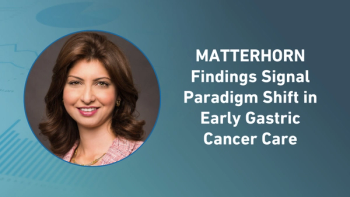
Using Feasibility Tools to Build Better Sponsor–Investigator Relationships
Feasibility, the evaluation of whether a particular trial can recruit enough of the right patients so that the study completes on time and within budget, is arguably the most critical part of the clinical trial process.
Feasibility, the evaluation of whether a particular trial can recruit enough of the right patients so that the study completes on time and within budget, is arguably the most critical part of the clinical trial process. Performing an effective evaluation will significantly reduce a sponsor’s risk in their research and development efforts.
Traditionally, sponsors and CROs have relied on investigators to inform them that the desired specific patent population is available. Yetin many instances, having been told that eligible patients are available, sponsors and CROs find that it is a struggle to recruit subjects. This suggests that the investigators’ enrollment forecasts are faulty.
The Clinical Trials Transformation Initiative (CTTI), in the paper on
"The clinical trial enterprise often takes communication for granted in the trial development phase. However, when we take the time to deeply understand our audiences and stakeholders, we learn that they may see things from a different perspective than we assumed."
Therefore, the sponsor and the investigator need to find a better way of communicating and working with each other to accurately forecast recruitment potential. There are several reasons why a trial may fall short on recruitment, including competition for investigators, patients and high-quality sites, and the fact that not all eligible patients who meet the inclusion criteria will want to join the trial. But a key driver is that the assessment of the potential patient population by the investigator is often not data-driven.
Physicians and investigators have tended to estimate a sponsor's queries about eligible patients, rather than using tools and databases. This estimate may be overly optimistic about the number of potential recruits to a trial for several reasons, including:
· Investigators might not be sufficiently familiar with the study protocol
· Investigators want to do the best for their patients
· Investigators don't want to compare badly to recruitment potential at other sites
But even accounting (for example, by sponsors reducing an investigator’s estimate) for over-estimations, the reliance on investigator evaluations is not working. It has been
The CTTI notes, with regards to
Tools that use a data-driven, evidence-based approach, to better identify trial participants and project recruitment rates can greatly improve the feasibility process. In one
A feasibility assessment that is not accurate can lead to unmet recruitment targets, which are costly for both the sponsor and the investigator/site. The accuracy of the feasibility process can be vastly improved when they draw on extensive data resources and use methodologies and technology. Such platforms enable investigator sites to more accurately assess eligible patients and allow the sponsor to access site information to make more informed patient recruitment strategies.
Eligibility criteria are becoming more complex, and pharmaceutical research and development is moving away from blockbuster drugs to more personalized medicines that target smaller patient populations. The need to use feasibility tools so that sponsors and investigators can build efficient relationships to accurately predict patient eligibility is greater than ever. Equally important is ensuring that these tools are easy to use and quick to complete, while allowing the study team real-time access to the data.
REF1
Grant D. Huanga et al.Clinical trials recruitment planning: A proposed framework from the Clinical Trials Transformation Initiative. Contemporary Clinical Trials66, 74–79 (2018)
REF2
Tufts CSDD Impact Report: 89% of trials meet enrollment, but timelines slip, half of sites under-enroll 15, January/February 2013
REF3
Johnson, O. An evidence-based approach to conducting clinical trial feasibility assessments
Clinical Investigation, 5,491–499 (2015)
Aidan Gannon is Head of Innovation and Client Services at Longboat Clinical.
Newsletter
Stay current in clinical research with Applied Clinical Trials, providing expert insights, regulatory updates, and practical strategies for successful clinical trial design and execution.






.png)



.png)



.png)
.png)
